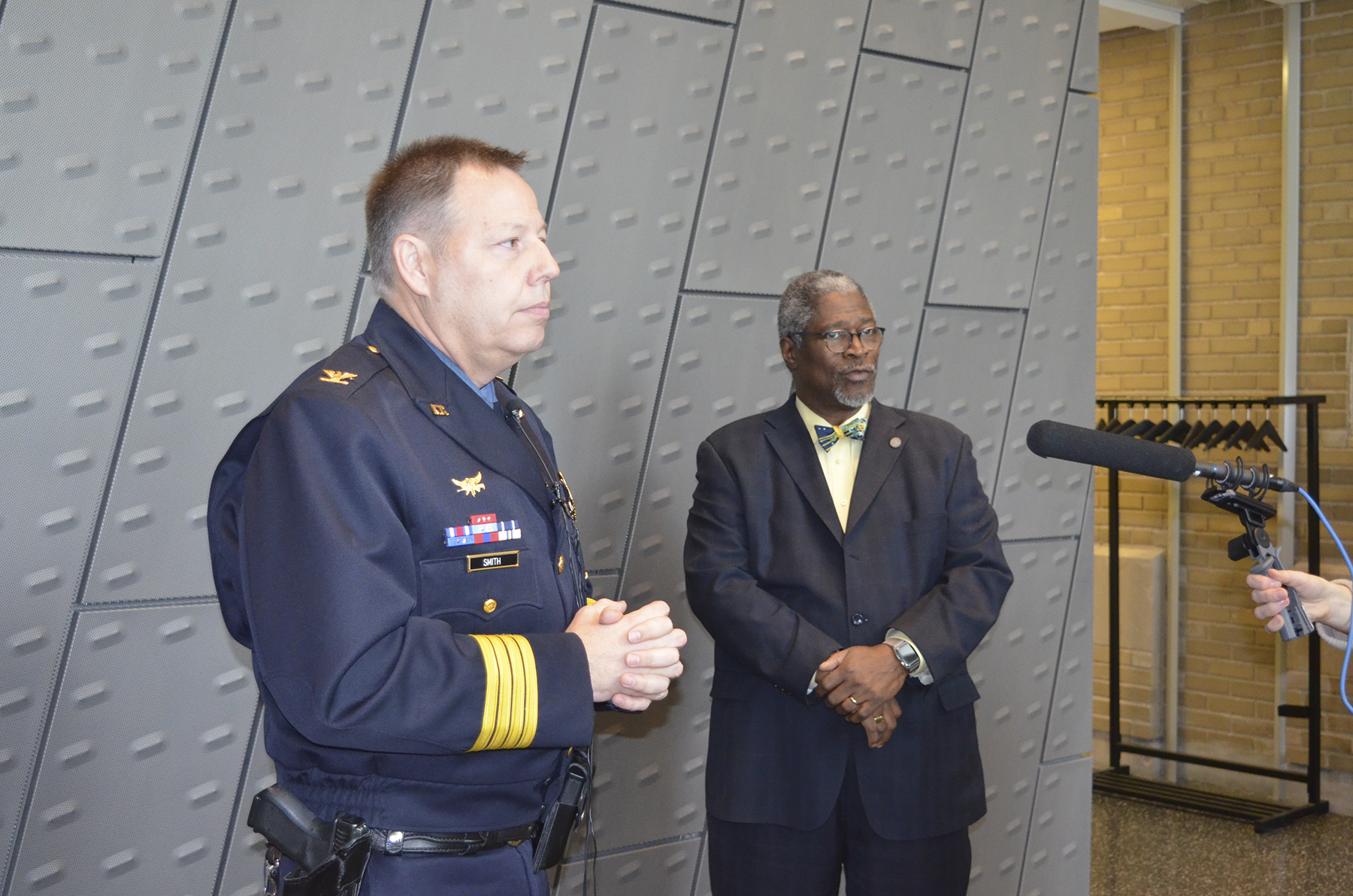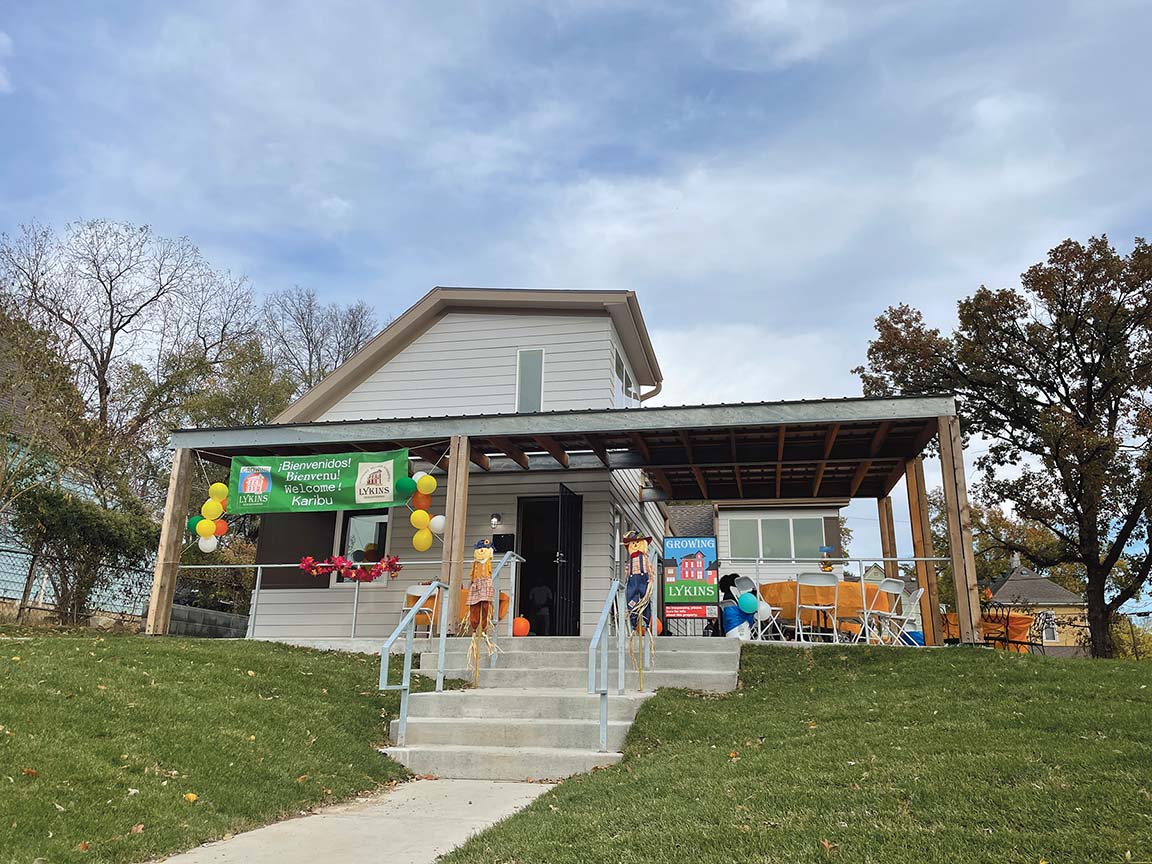
By Paul Thompson
Northeast News
On Wednesday, January 10, Kansas City Mayor Sly James and KCPD Chief of Police Rick Smith co-penned a lengthy blog post detailing their joint efforts to combat the rising tide of violent crime in Kansas City. The pair began the blog post by calling for the community at large to keep prioritizing crime reduction in their neighborhoods.
“The men and women of law enforcement rely on tips and information from members of our community to help solve crimes,” the post read. “If you see something, hear something or know something, do something. Both of us are powerless to help make our neighborhoods safer without your help. To that end, KCPD recently increased the TIPS hotline reward to $5,000.”
The City and the police department aren’t just looking externally for solutions to violent crime trends, though. The blog post addresses the police department’s utilization of crime information under Chief Smith, and how data is guiding enforcement efforts in Kansas City.
“A sergeant skilled at data and intelligence analysis provides both the patrol divisions and Chief Smith with detailed weekly crime data and maps, pointing out patterns, recent parolees and concerning issues that need follow-up,” wrote Smith and James. “Every week, officers and commanders assigned to each of the city’s six patrol divisions meet to discuss crime issues and neighborhood concerns in their area. Then every Wednesday, the commanders report how they’re working within their divisions to address those issues.”
In a follow-up conversation, Smith elaborated on the department’s emphasis on urgency under his direction. Since December 1, 2017, Smith said that the department has arrested approximately 20 homicide suspects as a result of the better flow of intelligence. He added that the department is also responding more swiftly to that intelligence information.
“When there is a violent crime, there is a sense of urgency to get some resolution,” Smith said. “We are doing a much better job with our intelligence, and getting people apprehended after incidences of violent crime.”
The post also discussed the efforts that Kansas City No Violence Alliance (KC NoVA) has undertaken to combat violent crime, pointing out that group violence has actually decreased since it was formed in 2013. That said, the post acknowledges that homicides have increased over the same period.
To turn the tide, the post continued, NoVA partners are meeting daily to pore over crime statistics and discuss new intelligence. Client advocates are working with more than 100 people hoping to leave a life of crime, honing conflict resolution skills, providing substance abuse treatment and offering job training. Personal visits are being made to those incarcerated as a result of NoVA enforcement efforts, in an attempt to reduce recidivism rates. According to the joint post, the Teens in Transition program brings at-risk teens together over the summer to “learn conflict resolution skills, undergo job training and art therapy.”
What’s more, Gina English, a former NoVA social worker, has been embedded at Central Patrol Division to help dissuade Kansas Citians from turning to a life of crime. In her first year as Central Patrol’s Social Services Coordinator, English – whose position was created by Smith – helped address the issue of unsupervised teens congregating at the Country Club Plaza. English connected them with social services and led responsible citizenship classes for teens and parents who had been cited for curfew violations.
Within the blog post, Smith and James announced that the police department has secured the funding necessary to embed a social worker at each KCPD patrol division, thus fulfilling one of the big ideas proposed by Smith when he interviewed for the Chief of Police job last summer.
In South Kansas City’s Ruskin neighborhoods (Ruskin Heights and Ruskin Hills), NoVA partners knocked on hundreds of doors in 2017. The goal was to inform families there would be an increased police presence in their neighborhood, that violent crime in the area was a top priority, and that resources were available to help individuals avoid a criminal lifestyle. After seeing violent crime in categories like aggravated assault, domestic violence, and armed robbery increase between between 2014 and 2016, the early returns have been positive.
“Crime rose 56 percent between 2014 and 2015 and another 11 percent between 2015 and 2016,” James and Smith wrote. “However, data show a 10 percent decrease for the same date range in 2017 when compared to 2016.”
The police department is also going to great lengths to increase the diversity of the force. Those efforts include a partnership with Kansas City Public Schools (KCPS) to provide law enforcement programming and a summer youth police academy for teenagers with an interest in the department.
The pair of Kansas City leaders followed up the blog post with a joint a press conference at KCPD headquarters on Thursday, January 11. During that press conference, Smith acknowledged the ongoing responsibility of all police officers to earn the trust of the community.
“Everyone who wears this uniform is an ambassador for this department and this city, and everyone in this job knows that,” Smith said.
For his part, James noted that the topic of violent crime is a constant item of discussion for Kansas City’s leaders, and will continue to be so for the foreseeable future.
“There’s not a day that goes by where this isn’t a major issue, a major topic of conversation, both here at KCPD headquarters and in my office and the City Manager’s office across the street.”


















